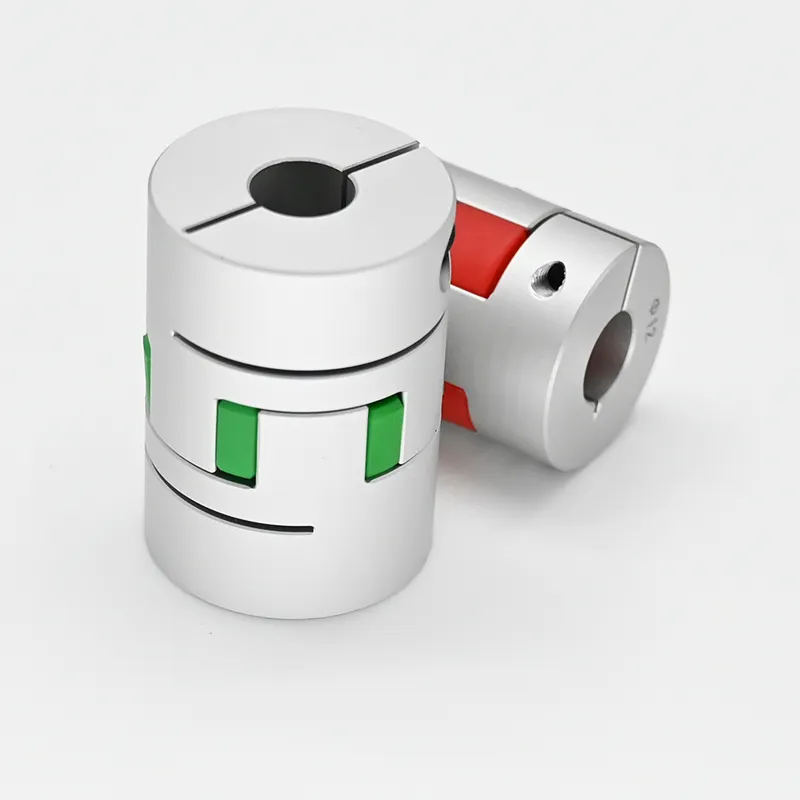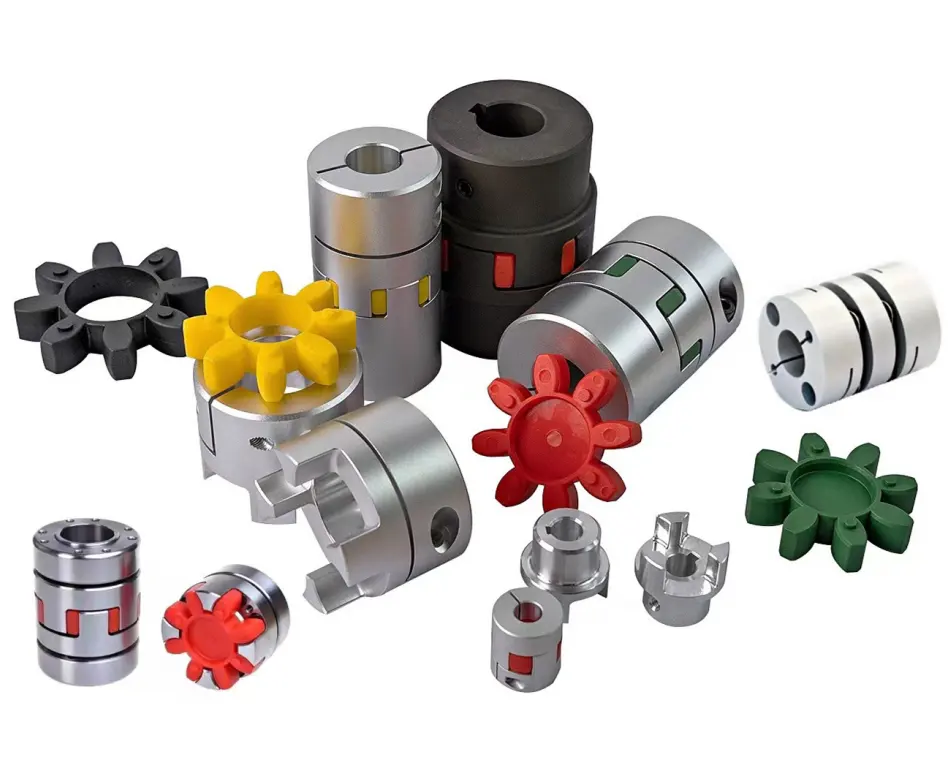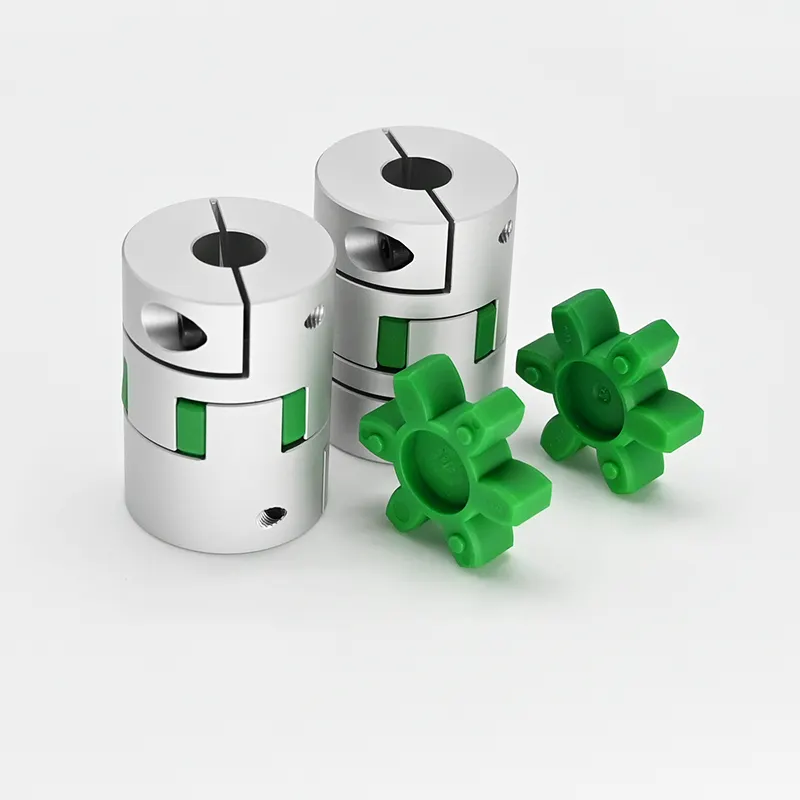Product Description
Curved Jaw SBT Type Polyurethane Coupling Spider Rubber Cushion Pad
Specification:
| Name | SBT Coupling Rubber Element Spider |
| Material | Silicone, EPDM, NR, NBR, FKM, SBR, HNBR, IIR, CR FFKM etc silicon,fluorine,NBR,FPM,EPDM,SILCONE ACM,HNBR |
| Size | According to the drawing or sample |
| Color | According to your requirement (Panton color card) |
| Application | Parts are used on vehicles, printing machines, food processing machines, textile machines, electronic machines, etc. |
| Inspection instruments | Excellent chemical and physical property, excellent oil- resistance, high temperature stability, etc. |
| Package | Inner plastic bag/outside carton/wooden pallets/ or any other special package as per customer's requirements |
| Final inspection | We'll make a final QC 100% inspection to make sure a good quality before delivery |
Features:
- Long performing life
- Heat resistance
- Crack proof
Advantages:
- Good physical properties.
- Easy installation.
- Technical Data
- Operating conditions
- Temperature: 40~+100°C
- Torque: 22.42500NM
- Material: PU/Rubber/NBR
- Hardness: 9098Shore A custom
- Color: red,white,green,yellow,black or custom
| Coupling Type | Serial No | Lobe | Hardness | |
| SBT ELASTIC SPIDER | T-40 | PU Spider | 6 | SHA93 |
| SBT ELASTIC SPIDER | T-45 | PU Spider | 6 | SHA93 |
| SBT ELASTIC SPIDER | T-56 | PU Spider | 8 | SHA93 |
| SBT ELASTIC SPIDER | T-62 | PU Spider | 6 | SHA93 |
| SBT ELASTIC SPIDER | T-65 | PU Spider | 6 | SHA93 |
| SBT ELASTIC SPIDER | T-75 | PU Spider | 6 | SHA93 |
| SBT ELASTIC SPIDER | T-79 | PU Spider | 6 | SHA93 |
| SBT ELASTIC SPIDER | T-90 | PU Spider | 6 | SHA93 |
| SBT ELASTIC SPIDER | T-94 | PU Spider | 6 | SHA93 |
| SBT ELASTIC SPIDER | T-104 | PU Spider | 6 | SHA93 |
| SBT ELASTIC SPIDER | T-108 | PU Spider | 6 | SHA93 |
| SBT ELASTIC SPIDER | T-126 | PU Spider | 6 | SHA93 |
| SBT ELASTIC SPIDER | T-133 | PU Spider | 6 | SHA93 |
| SBT ELASTIC SPIDER | T-154 | PU Spider | 6 | SHA93 |
| SBT ELASTIC SPIDER | T-170 | PU Spider | 6 | SHA93 |
| SBT ELASTIC SPIDER | T-175 | PU Spider | 8 | SHA93 |
| SBT ELASTIC SPIDER | T-180 | PU Spider | 6 | SHA93 |
| SBT ELASTIC SPIDER | T-200 | PU Spider | 6 | SHA93 |
Application
Other related coupling splider
FAQ
Q: Are you manufacturer or trading company?
A: We are manufacturer, engineer had rich experience over 20 years.
Q: How to get the quickest quotation?
A: Sending drawing, material, quantity and other rrequirements by email.
Q: How to get quotation without drawing?
A: Possible send sample, pictures or detail descriptions of products to us, we will return you drawing for confirm.
Q: I have an idea for a new product, but not sure if it can be manufactured. Can you help?A. Yes! We are always happy to work with potential customers to evaluate the technical feasibility of your idea or design and we can advise on materials, tooling and likely set-up costs.
Q: My custom products have already been developed on CAD. Can you use the drawings?
A. Yes! DWG, DXF, IGES, Solidworks and Rhino files can all be used to generate quotes, models and mould tools - this can save time and money in producing your parts.
Q: Can I test my idea/product before committing to mould tool manufacture?
A. Yes, we can use CAD drawings to make models for design and functional evaluations.
Q: What type of plastic/rubber material is best for my design/product?
A. Materials selection depends on the application of your design and the environment in which it will function. We will be happy to discuss the alternatives and suggest the best material.
Q: How to get sample?
A: Free sample is available for your quality evaluation, but you should pay the freight. Regarding customize products, sample and mould order will go first before mass production.
/* January 22, 2571 19:08:37 */!function(){function s(e,r){var a,o={};try{e&&e.split(",").forEach(function(e,t){e&&(a=e.match(/(.*?):(.*)$/))&&1

Factors to Consider When Choosing a Jaw Coupling for a Specific System
Choosing the right jaw coupling for a specific system is crucial to ensure efficient power transmission and reliable operation. Several factors should be considered when making the selection:
- Torque and Power Requirements: Calculate the torque and power requirements of the system to determine the appropriate size of the jaw coupling. Ensure that the selected coupling can handle the maximum torque and power output without exceeding its rated capacity.
- Shaft Size: Match the jaw coupling's bore size to the shaft diameters of the connected equipment. The coupling's bore should be slightly larger than the shaft diameter to allow for easy installation and proper clamping.
- Misalignment Compensation: Evaluate the degree of misalignment that the system may experience during operation. Jaw couplings can handle angular, parallel, and axial misalignment to varying degrees, but it's essential to choose a coupling with the appropriate misalignment capabilities for the specific application.
- Operating Speed: Consider the operating speed of the system. Some jaw couplings are designed for high-speed applications, while others are more suitable for lower speeds. Choosing a coupling that matches the system's operating speed helps prevent issues such as resonance and premature wear.
- Environmental Conditions: Assess the environmental conditions in which the coupling will operate. Factors such as temperature, moisture, and exposure to chemicals can influence the choice of material for the jaw coupling.
- Backlash: Determine if the application requires minimal or zero backlash. Some jaw couplings may have inherent backlash due to their design, while others are designed to provide backlash-free operation.
- Installation and Maintenance: Consider the ease of installation and maintenance of the jaw coupling. Some couplings may have a split design, making installation and replacement simpler.
- Cost and Budget: Compare the cost of the jaw coupling with the system's budget. While it's essential to select a high-quality coupling, it's also crucial to ensure it fits within the budget constraints.
By carefully evaluating these factors, engineers and designers can make an informed decision when choosing a jaw coupling that meets the specific requirements of the system, leading to optimal performance and longevity of the mechanical system.

Can jaw couplings be used in applications with high shock and impact loads?
Yes, jaw couplings can be used in applications with high shock and impact loads, but their suitability depends on the specific design and construction of the coupling as well as the magnitude and frequency of the shock and impact loads. Jaw couplings are known for their ability to handle certain levels of shock and vibration due to the presence of the elastomer spider, which acts as a damping element to absorb and dissipate vibrations. However, there are some important considerations to take into account when using jaw couplings in high shock and impact load applications:
- Coupling Material: The choice of coupling material is crucial in applications with high shock and impact loads. Couplings made from robust materials, such as steel or alloy, provide better resistance to deformation and can handle higher impact forces compared to couplings made from less sturdy materials.
- Elastomer Spider: The elastomer spider is the central element of the jaw coupling and is responsible for absorbing shocks and vibrations. It is essential to select an elastomer spider with the appropriate hardness and resilience for the specific application. Harder elastomers can withstand higher loads but may transmit more vibration, while softer elastomers offer better shock absorption but have lower torque capacity. Choosing the right elastomer hardness is a trade-off between shock absorption and torque transmission requirements.
- Operating Conditions: Consider the operating conditions, such as the frequency and magnitude of shock and impact loads, when selecting a jaw coupling. For applications with intermittent or occasional shock loads, standard jaw couplings with moderate shock absorption capabilities may suffice. However, for continuous or severe shock loads, specialized high-torque jaw couplings with enhanced shock absorption properties might be more suitable.
- Regular Maintenance: In high shock and impact load applications, it is crucial to perform regular maintenance and inspections to identify any signs of wear, fatigue, or damage to the coupling components. Regular maintenance ensures that the coupling remains in good working condition and minimizes the risk of unexpected failures due to excessive loading.
- Consider Alternative Couplings: While jaw couplings can handle certain levels of shock and impact loads, some applications with exceptionally high loads may require more specialized couplings, such as grid couplings, gear couplings, or disc couplings. These couplings are designed explicitly for heavy-duty applications with high shock and impact loads and can offer superior performance and reliability under such conditions.
In conclusion, jaw couplings can be used in applications with high shock and impact loads, but the specific coupling design, material, elastomer hardness, and operating conditions must be carefully considered. Proper selection, installation, and maintenance of the coupling are essential to ensure reliable performance and longevity in challenging operating environments with significant shock and impact loads.

Types of Jaw Coupling Designs
Jaw couplings come in various designs to meet different application requirements. The main types include:
- One-Piece Jaw Coupling: This design consists of a single piece of material, typically made of steel or aluminum. It offers simplicity and compactness, making it suitable for light to medium-duty applications.
- Two-Piece Jaw Coupling: This design features two separate hubs with a flexible spider placed in between. The two-piece design allows for easier assembly and disassembly, making it convenient for maintenance and replacement of the elastomeric spider.
- Three-Piece Jaw Coupling: In this design, the coupling includes three parts: two hubs and an insert. The hubs are typically made of metal, while the insert is an elastomeric element (spider). Three-piece jaw couplings provide better damping of vibrations and are commonly used in applications where vibration isolation is crucial.
- Customizable Jaw Coupling: Some manufacturers offer customizable jaw couplings, allowing customers to choose different hub styles, materials, and spider hardness to tailor the coupling's performance for specific applications.
Each design has its advantages and is selected based on factors such as torque requirements, misalignment compensation, and ease of maintenance.


editor by CX 2024-04-04
